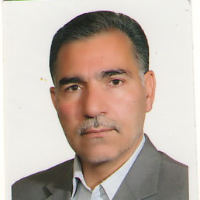Demographic changes and livelihood developments of rangeland users in Iran with emphasizing the Pastoralists territory, Bazoft, Chaharmahal va Bakhtiari province
Introduction:
A historical review of the evolution of demographic developments and livelihood changes in rangeland users could help to better understand the desired strategies. It could also provide livelihood alternatives and feasible policy frameworks in order to improve rangeland status and overcome crises and challenges facing sustainable rangeland management.
Purpose of the research:
In line with tribal affairs and the status of their rangeland-dependent livelihoods, four main aims are examined. First, a historical assessment of the evolution of demographic changes is presented (1). Subsequently, livestock production systems are described (2). Then, the situation of rangeland-dependent livelihoods in Iran is explained (3). Finally, while presenting the livelihood perspective in Chaharmahal va Bakhtiari province and in particular, Bazaft, suggestions for sustainable rangelands management are presented (4).
Methodology :
This paper evaluates the data and information of historical periods by reviewing historical sources in the field of pastoralists livelihoods and tribal affairs of Iran.Geographical area of research Demographic changes and livelihood developments of rangeland users, and by reviewing sources in the field of rangeland management, the paper evaluates the data and information of periods.
The results of summarizing and reviewing the resources show that the imbalance between humans, livestock and rangeland and reducing the share of livestock products are the main challenges of sustainable rangeland management in Iran.
In this regard, it is necessary to pay attention to a comprehensive perspective that could use all the potentials of the region for sustainable rangeland management. Sustainable rangeland management would be achieved while maintaining a balance between livestock, rangeland and humans to a variety of livelihoods in order to develop the complementary livelihoods of rangeland users in planning and policy making. Future studies could explain the shortcomings (weaknesses) of policy in the context of sustainable rangeland management and then, develop a policy-oriented livelihood framework.
- حق عضویت دریافتی صرف حمایت از نشریات عضو و نگهداری، تکمیل و توسعه مگیران میشود.
- پرداخت حق اشتراک و دانلود مقالات اجازه بازنشر آن در سایر رسانههای چاپی و دیجیتال را به کاربر نمیدهد.




